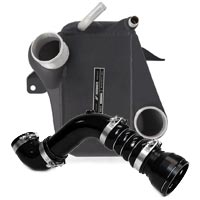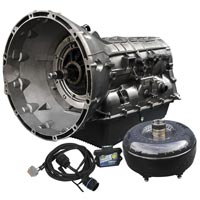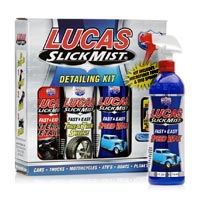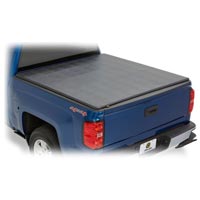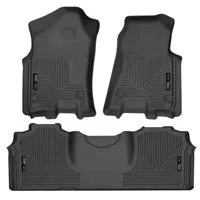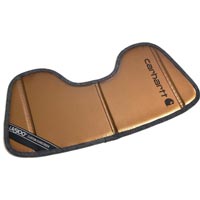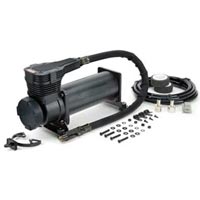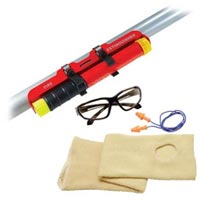Following the end of the Ford and Navistar International partnership, Ford Motor Company had to start the 2011 production year on a clean sheet. Introducing the completely new “Scorpion” 6.7L Powerstroke, this engine was designed to reestablish the reliability of the Ford Powerstroke. By designing, engineering, and producing their own diesel engine, Ford gained an advantage over the competition. Without a partner, Ford was able to design the 6.7L Powerstroke to meet the specific needs of their customers and streamline their warranty process. Ford included many new features to make the 6.7L Powerstroke their most powerful and emissions-friendly diesel engine. The EPA emissions standards continued to increase over the years, which means Ford had to include enhanced emissions control equipment on the 6.7L Powerstroke. The 6.7L Powerstroke is built with a Compacted Graphite Iron Block, that is a more resilient material than the cast-iron used in previous engines. With a more durable block, Ford was able to add more enhancements to the 6.7L Powerstroke to significantly increase horsepower and torque. Consumers were so impressed with the increased performance and capabilities of the 6.7L Powerstroke, over 500,000 Powerstroke’s sold in the first 3 years of production.
The 6.7L Powerstroke’s Compacted Graphite Iron Block features Nodular-Iron main caps to secure the crankshaft in place with 6 bolts each. The connecting rods in the 6.7L Powerstroke are constructed with forged-steel for increased durability over the powdered-steel rods on previous engines. One of the major innovations of the 6.7L Powerstroke was the use of Cast-Aluminum Reverse-Flow Cylinder Heads. These cylinder heads were designed to help reduce turbo lag by allowing air to enter through the valve covers and exit through the lifter valley. The 6.7L Powerstroke features two separate cooling systems, one for cooling the engine and another for cooling the new air-to-water intercooler, transmission fluid, fuel system, and the EGR system. The addition of an air-to-water intercooler provides the 6.7L Powerstroke with superior cooling capabilities compared to a standard air-to-air intercooler. Initially Ford added a Single Sequential Turbocharger (SST) to the 6.7L Powerstroke that featured a waste-gate, two compressor wheels, two air inlets, and a ball bearing center cartridge. This variable-geometry turbo was designed to perform like a compound turbocharger set-up. In 2015, Ford decided to replace the SST turbocharger with a Garrett GT37 variable-geometry turbocharger. The GT37 turbo has a non-wastegate design and features a larger 88mm compressor wheel and a 72.5mm turbine wheel. These features provide the 6.7L Powerstroke with improved high-altitude performance and exhaust braking. This turbocharger proved to be a more reliable option, which is why Ford continues to use it on the 6.7L Powerstroke.
To meet the requirements of the EPA’s new emissions standards, Ford introduced the Selective Catalytic Reduction system on the 6.7L Powerstroke. With this system, Diesel Exhaust Fluid is injected directly into the exhaust stream to convert the nitrous oxides into water and nitrogen. The improved EGR Valve regulates exhaust gases before they reach the EGR coolers to help reduce sludge build-up and clogging while reducing emissions. The 6.7L Powerstroke features two EGR Coolers, these coolers are designed to expand and contract to reduce the risk of failure. Ford continued to utilize a high-pressure common-rail fuel system for the 6.7L Powerstroke that features the Bosch CP4.2 injection pump and Piezo-Electric fuel injectors. In 2015, the CP4.2 pump’s stroke was improved to increase fuel flow and the Piezo-Electric injector nozzle tips were updated to provide a finer fuel spray. With the updates to the fuel system and the new turbo, the 2015 and up model year 6.7L Powerstroke’s have increased horsepower and torque levels. In 2011, the power output of a stock 6.7L Powerstroke started at 390 hp and 735 lb-ft of torque, although shortly thereafter Ford increased power levels up to 400 hp and 800 lb-ft of torque. In 2015, after the upgrades to the fuel system and the new turbocharger, power levels increased to 440 hp and 860 lb-ft of torque. 10 years after its initial production, Ford continues to use the 6.7L Powerstroke in their Super Duty trucks. Keep your 6.7L Powerstroke working its best with the maintenance components it needs, including Fuel Filters, Oil Filters, Motorcraft Oil and Coolant. Improve the reliability of your 6.7L Powerstroke with replacement parts including Intercooler Pipe Upgrades and Oil Coolers. Enhance your trucks performance with a new Cold Air Intake and a Programmer, Tuner, or Module. Whether you’re doing routine maintenance or adding some new performance upgrades, Cyberpunk Diesel is your one-stop-shop for all your 2011-2016 Ford 6.7L Powerstroke needs.















